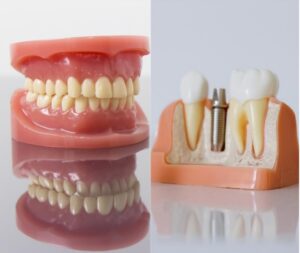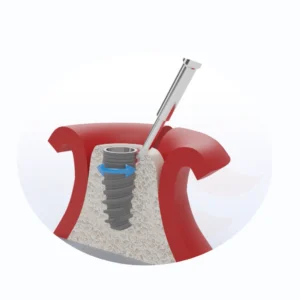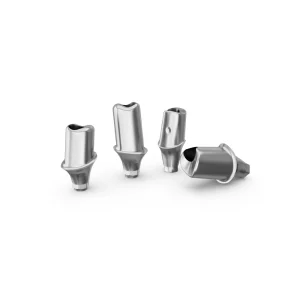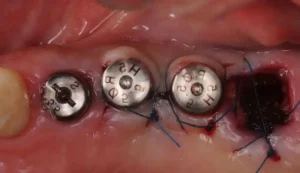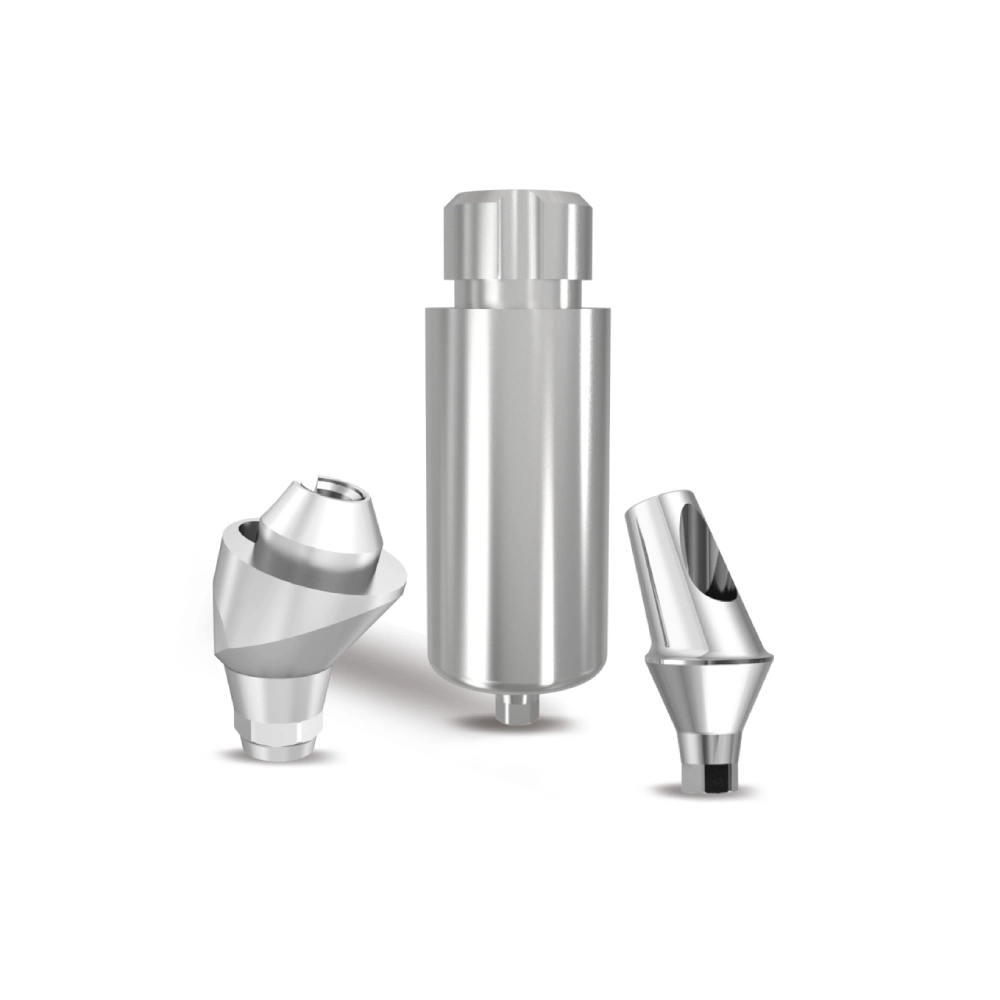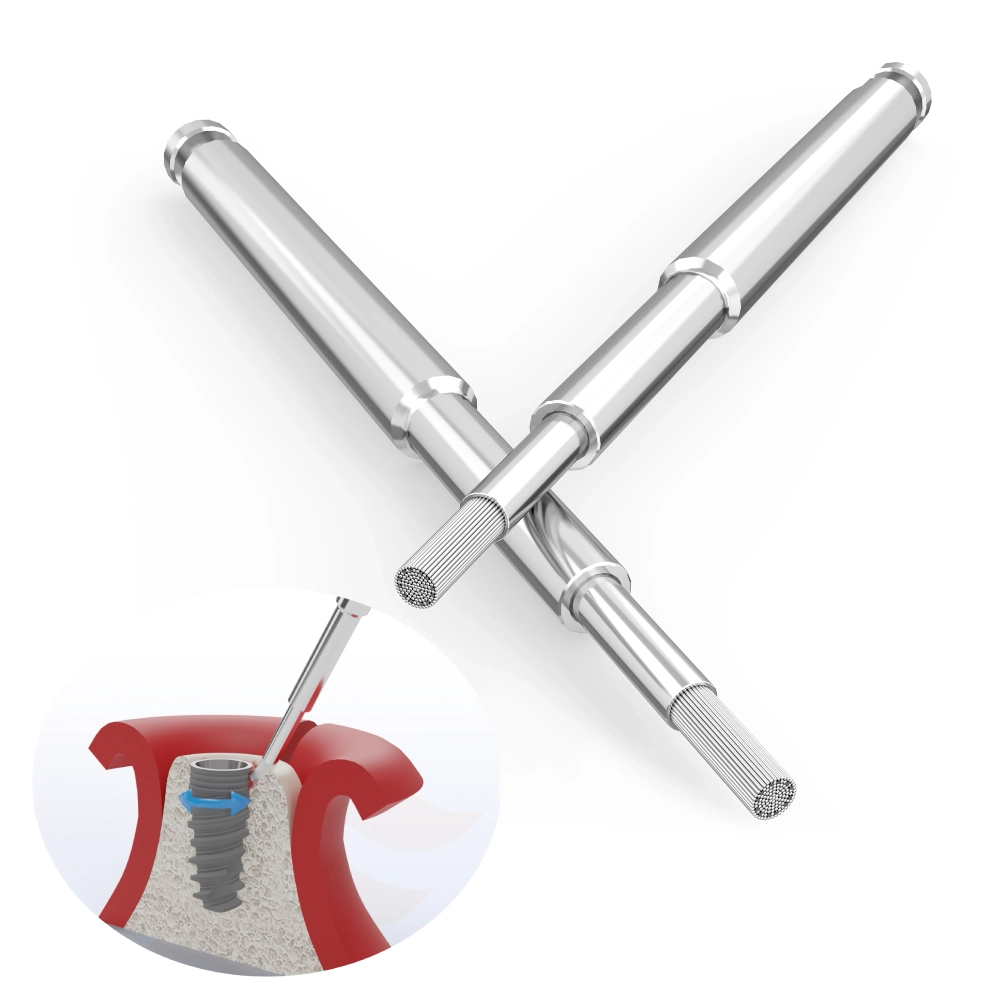No campo da medicina dentária, os implantes tornaram-se um método crucial para restaurar dentes em falta. Ao longo de todo o processo de tratamento, os pilares de cicatrização desempenham um papel vital. O pilar de cicatrização é um componente essencial da cirurgia de implantes dentários. Este artigo fornecerá informações mais pormenorizadas sobre os pilares de cicatrização de implantes dentários, por isso, continue a ler.
O que é um pilar de cicatrização de implantes dentários?
O pilar de cicatrização do implante dentário, muitas vezes referido como tampa de cicatrização ou formador gengival, é um componente essencial na cirurgia de implantes dentários. Fabricado em liga de titânio de alta qualidade, foi especificamente concebido para guiar e promover a cicatrização dos tecidos moles e duros em redor do implante. Este dispositivo desempenha um papel crucial no processo de implante dentário, protegendo o implante da placa bacteriana e dos restos de comida, ao mesmo tempo que assegura uma integração bem sucedida com o maxilar e a formação de uma linha gengival natural.
Normalmente instalado no topo do implante, o pilar de cicatrização é concebido para ser ligeiramente mais largo do que o próprio implante, ajudando a moldar o contorno ideal da gengiva durante o processo de cicatrização. Tanto nas cirurgias de implantes de fase única como de duas fases, os cirurgiões orais instalam o pilar de cicatrização no momento adequado, com base nas circunstâncias e necessidades específicas do paciente, apoiando e acelerando a recuperação e a regeneração dos tecidos circundantes.

Como é que um pilar de cicatrização de implantes funciona?
Um componente crucial da cirurgia de implantes dentários é o pilar de cicatrização do implante, cujo funcionamento se baseia numa fusão sofisticada de conceitos biológicos e técnicos. O pilar de cicatrização é colocado de forma segura no topo do implante e funciona como uma ponte de ligação quando o implante é colocado com precisão no maxilar. O seu padrão é subtilmente mostrado acima da linha da gengiva. Este design inteligente não só dá ao tecido gengival uma orientação clara para o desenvolvimento, como também o ajuda a cicatrizar à volta do rebordo do implante de uma forma que se adapta melhor à eventual coroa, garantindo o aspeto estético e a naturalidade da restauração acabada.
O pilar de cicatrização cria um ambiente de cicatrização estéril e saudável para a estabilidade inicial e a integração bem sucedida a longo prazo do implante, que também funciona como guardião do implante, isolando com êxito potenciais ameaças como bactérias, placa dentária e resíduos alimentares no ambiente oral. O pilar de cicatrização do implante é essencial para a cirurgia de implantes dentários porque proporciona um mecanismo de proteção duplo que orienta a recuperação dos tecidos e protege o implante de danos.
Instalação do pilar de cicatrização
Um dos procedimentos mais importantes na cirurgia de implantes dentários é a colocação do pilar de cicatrização, que é efectuada imediatamente após a inserção bem sucedida do implante no maxilar. O cirurgião oral realizará cuidadosamente o procedimento sob a proteção de anestesia local, fazendo uma pequena incisão para levantar suavemente o tecido gengival e revelar o implante por baixo. O pilar de cicatrização é então cuidadosamente aparafusado na parte superior do implante utilizando equipamento concebido para o efeito, assegurando a sua fixação segura. De modo a produzir as melhores circunstâncias possíveis para a cicatrização e modelação da gengiva, o médico cose suavemente o tecido gengival após terminar esta fase, certificando-se de que a parte superior do pilar de cicatrização fica corretamente exposta.

Quando é colocado o pilar de cicatrização?
O implante e o pilar de cicatrização são inseridos simultaneamente durante a primeira parte do procedimento, criando um processo terapêutico eficaz. O pilar de cicatrização é fixado ao implante assim que este é posicionado com precisão no maxilar, servindo como uma ponte que liga o implante à eventual coroa. O pilar de cicatrização mantém a estabilidade e a integração do implante no maxilar durante este período, orientando a cicatrização natural do tecido gengival à volta dos seus limites. Um pilar de ligação mais avançado tomará o lugar do pilar de cicatrização após o tempo de cicatrização ter terminado com sucesso e o implante e o maxilar terem atingido a combinação biológica ideal. Isto fornecerá uma base forte para a instalação da coroa final.
A implantação inicial e a cicatrização subsequente do implante são separadas em duas fases distintas no procedimento de duas etapas. Para permitir alguns meses de integração óssea, o implante é primeiro cuidadosamente colocado no osso maxilar e depois momentaneamente escondido pelo tecido gengival. Na segunda fase do procedimento, o médico efectua uma nova incisão nas gengivas para expor o implante e colocar o pilar de cicatrização quando o implante e o osso estiverem firmemente fundidos. O pilar de cicatrização é crucial nesta fase para encorajar a remodelação e a cicatrização da gengiva. Após um período de cicatrização e recuperação, o procedimento de implante será concluído com a instalação exacta da coroa e a remoção do pilar de cicatrização.
É importante referir que o pilar de cicatrização pode ser utilizado para minimizar consideravelmente a duração total da cirurgia de implantes dentários, bem como para reduzir a frequência das consultas e o sofrimento do paciente. O paciente não tem de suportar a agonia de um segundo procedimento, uma vez que o pilar de cicatrização e o implante são colocados em simultâneo durante a primeira fase da cirurgia. No entanto, uma vez que cada paciente tem uma condição oral e um conjunto de exigências únicas, o cirurgião oral deve avaliar cada caso individualmente e ajudar a decidir sobre a abordagem cirúrgica e a utilização ou não de um pilar de cicatrização.
Pilar de cicatrização de implantes vs. parafuso de cobertura
Na cirurgia de implantes dentários, o pilar de cicatrização e parafuso de cobertura têm funções distintas mas significativas. A fim de incentivar a forma natural das gengivas e fornecer um suporte sólido para a instalação da coroa que se segue, o pilar de cicatrização é utilizado principalmente para dirigir o processo de cicatrização dos tecidos moles e duros à volta do implante. Normalmente, é inserido durante procedimentos de uma ou duas fases para garantir que o implante e o maxilar se integram corretamente.
Por outro lado, o parafuso de cobertura é utilizado principalmente na primeira fase de proteção que se segue à colocação do implante. Veda firmemente a parte superior do implante, reduzindo a possibilidade de infeção ao manter os germes, partículas de alimentos e outras impurezas fora do dispositivo. O parafuso de cobertura é uma barreira vital que mantém o implante e o maxilar integrados ao longo deste procedimento.
Em conclusão, o parafuso de cobertura dá prioridade à proteção do implante contra a contaminação para garantir um processo de cicatrização sem problemas, enquanto o pilar de cicatrização se concentra em incentivar a cicatrização e a forma antes da instalação da coroa. Na cirurgia de implantes dentários, os seus conhecimentos combinados asseguram a colocação correta do implante e a sua estabilidade ao longo do tempo.
Os pilares de cicatrização não devem ser reutilizados
Para garantir a colocação bem sucedida e a estabilidade a longo prazo dos implantes dentários, os pacientes devem evitar reutilizar as tampas de cicatrização. Durante o processo de cicatrização do implante, é importante escolher a tampa de cicatrização adequada com base nas recomendações do dentista e substituí-la por um pilar e uma coroa adequados quando a cicatrização estiver concluída. As razões para tal são as seguintes:
- Embora as tampas de cicatrização possam ser desinfectadas, este processo não consegue restaurar as caraterísticas originais da superfície que promovem a cicatrização dos tecidos. As superfícies das tampas de cicatrização são especialmente tratadas durante o fabrico para incentivar o crescimento e a fixação dos tecidos moles e duros circundantes. Uma vez que estas propriedades de superfície são comprometidas pelo uso, não podem ser recuperadas mesmo com a desinfeção, o que afecta negativamente a sua biocompatibilidade e eficácia de cicatrização.
- O processo de esterilização pode também afetar negativamente a composição inicial da superfície do material de titânio. O titânio é amplamente utilizado em implantes dentários devido à sua excelente biocompatibilidade e resistência à corrosão. No entanto, uma desinfeção ou esterilização excessiva pode alterar as propriedades químicas e físicas da superfície do titânio, afectando a sua interação com os tecidos circundantes e diminuindo a eficácia global do implante.
- Além disso, a reutilização das tampas de cicatrização acarreta o risco de uma limpeza incompleta. Durante o processo de cicatrização, as tampas de cicatrização podem entrar em contacto com bactérias, restos de comida e outros contaminantes da cavidade oral. Se não forem cuidadosamente limpos, estes contaminantes podem permanecer na tampa de cicatrização, aumentando o risco de infeção. Além disso, o processo de limpeza também pode causar danos físicos na tampa de cicatrização, tais como arranhões ou deformações, que podem afetar a sua estabilidade e capacidade de fixação segura ao implante, acabando por afetar a estabilidade do implante e o sucesso a longo prazo.
Conclusão
Os pilares de cicatrização de implantes dentários são componentes cruciais na cirurgia de implantes dentários, concebidos para orientar e promover a cicatrização dos tecidos moles e duros à volta do implante. Fabricados em liga de titânio de alta qualidade, protegem o implante da placa bacteriana e dos resíduos alimentares, assegurando uma integração bem sucedida com o maxilar e a formação de uma linha gengival natural. O pilar de cicatrização é instalado no topo do implante, ligeiramente mais largo do que o próprio implante, para moldar o contorno ideal da gengiva durante o processo de cicatrização. Cria um ambiente de cicatrização estéril e saudável, orientando a recuperação dos tecidos e protegendo o implante de danos. O implante e o pilar de cicatrização são inseridos simultaneamente durante a primeira fase do procedimento, permitindo um processo terapêutico mais eficaz.

